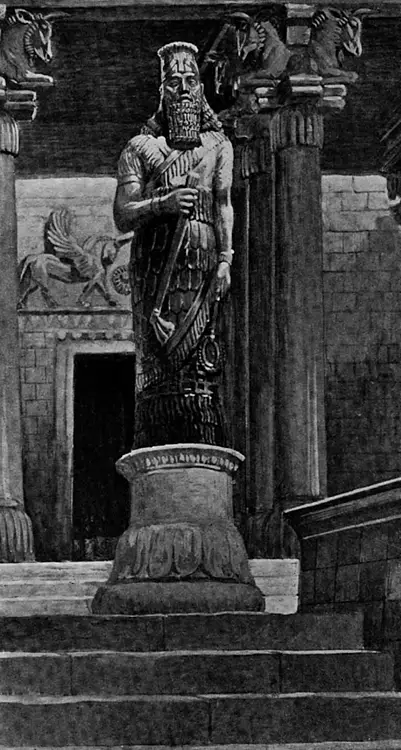Nebuchadnezzar II
Background
-
King Nebuchadnezzar II is seen by many as one of the most remarkable kings of ancient Babylon. King Nabopolassar, his father, had achieved the difficult conquest of the mighty Assyrians and had freed Babylon from their harsh military rule. Nebuchadnezzar now had the opportunity to restore Babylon to its former glory. This new land is called the Neo-Babylonian Empire.


Nebuchadnezzar’s Neo-Babylonian Empire
- Nebuchadnezzar’s empire was very impressive. He defeated the Egyptians who had taken the side of the Assyrians at Carchemish. He took control of Palestine and the area around Syria. He also conquered the city of Jerusalem and captured many Jewish prisoners who were taken to Babylon. He had full control of all trade routes across Mesopotamia too. Overall, his empire reached further in every direction.

Early years in power
- In 605 BC, Nebuchadnezzar rebuilt Babylon. It now covered a larger expanse andwas a place of outstanding beauty. The new king built two new and strong walls around the city with a moat around the outside. Historians believe that the main wall was so wide that the city could host chariot races around them.
- The walls met at the main entrance of the city, which was called the Ishtar Gate, named after the goddess of love, war, fertility and sex.
- Nebuchadnezzar ordered these gates to be made with a blue-tiled front. There are images of animals on the gates that represent the gods. The famous lions represent Ishtar. There are also images of dragons to represent Marduk, who was the main god of the Babylonian Empire, and bulls to represent the god of weather, Adad.
- This entrance of real beauty also had two massive bronze gates to protect the city.
- Nebuchadnezzar’s palace was one of the most impressive the empire had ever seen and the city had streets paved with large stone slabs. There were solid gold statues and a grand temple.

The Hanging Gardens of Babylon
- One of Nebuchadnezzar’s most remarkablelegacies was the building of the famous Hanging Gardens of Babylon.
- According to the legend, the gardens were built for Nebuchadnezzar’s wife, a princess calledAmyitis from the Median tribe, who missed her distant land of forests, mountains and meadows.
- The gardens were built on a slope and consisted of a series of terraces supported by pillars. The terraces and pillars were made of baked brick and tar.
- The gardens would have been an astonishing sight: they were around 400 feet wide by 400 feet long. They may also have been as high as the city walls.
- A large variety of tree flower and plants were planted in the garden. Descriptions of the garden suggest that the king had created a green and leafy paradise on earth.
- There was even a water pump system, driven by slaves, which made sure that all the plants at the top of the garden received the right amount of water in the hot, dry climate of Babylon.
- In recent years scholars have debated whether the gardens were actually located at Babylon. We still don’t know what happened to them. Some think they may have been destroyed in an earthquake, but the legend lives on.

Nebuchadnezzar and the Bible
- Nebuchadnezzar features in the bible, most notably in the book of Daniel. Daniel was a noble youth who lived in the court of Nebuchadnezzar and was known for his ability to interpret dreams.
- Nebuchadnezzar was famously said to have had a dream, which Daniel helped him to interpret, about four, new, powerful kingdoms that would be ended by the kingdom of god, the greatest power of all.
- In the bible we learn that god loses patience with Nebuchadnezzar’s sense of importance and the king soon dreams that he will live like an animal until he acknowledges god. He goes insane for a long period until he finds god again, admits his mistakes and returns to normal.

Nebuchadnezzar’s Babylonian tradition
- Nebuchadnezzar II died in around 561 BC, but his achievements lived on under new leaders. Babylon was often seen as the most special city in Mesopotamia and so most of its conquerors respected its civilised traditions. The Persians took Babylon in 539 BC, after the battle of Opis. Yet, Babylon continued to prosper under Persian rule and became famous as a place of art, culture and education. The Persian King Cyrus the Great was known for his tolerance of difference, but this had all begun under Nebuchadnezzar.









